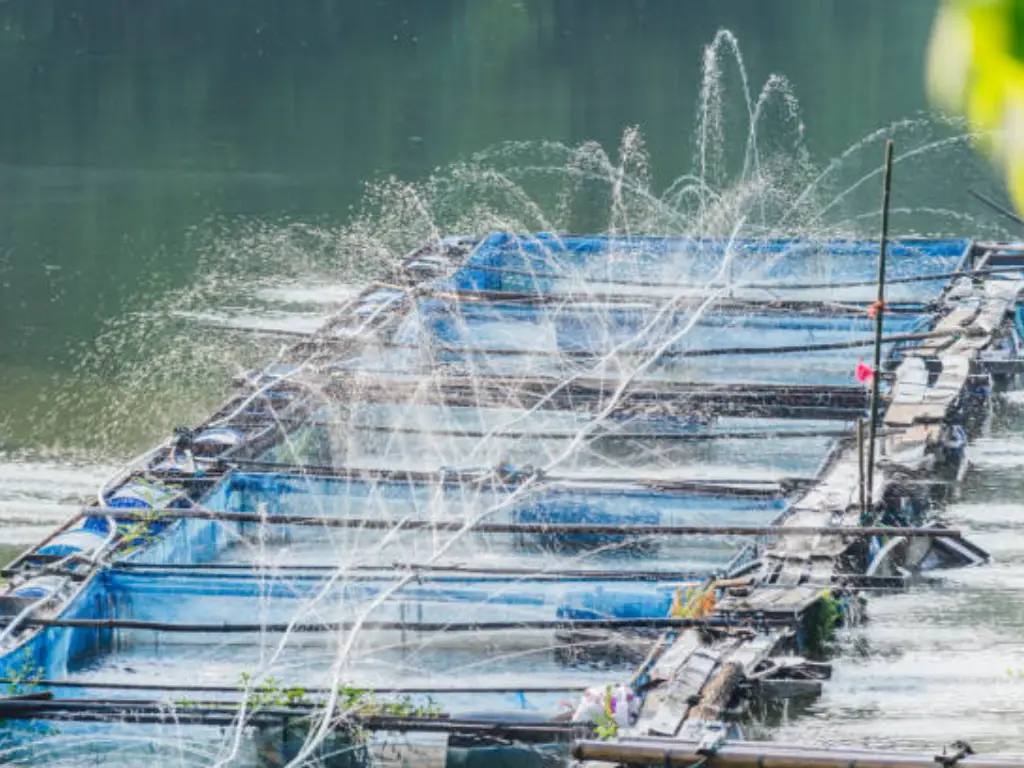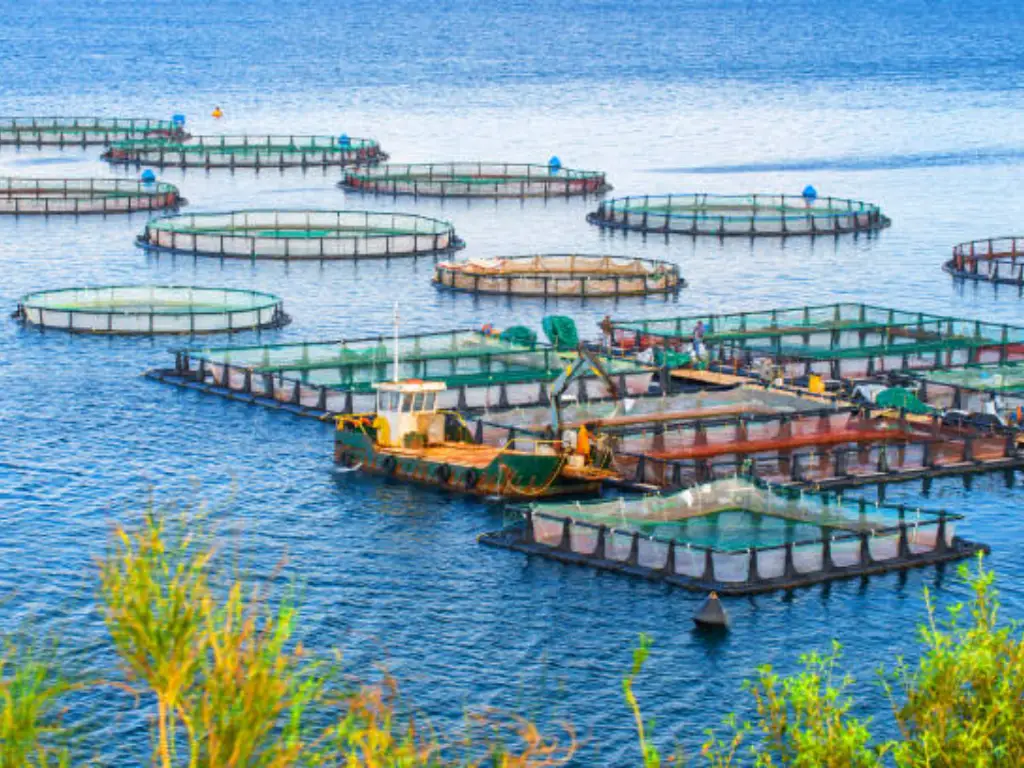Paddlers are saddled with the responsibility of selecting from the different sit-on-top or sit-inside kayaks, folding or inflated kayaks, composite or plastic kayaks, and many other specifications.
So, how can you decide on the best kayak for the lake and river that suits your needs? Just like the comprehensive guide on the best fishing kayak for beginners, we’ve prepared a detailed guide on how to make the perfect choice.

Assess the Needs and Skill Level of Choosing a Kayak
When deciding on the best kayak for rivers and lakes, there are a number of factors that you must focus on, such as the reason why the kayak is needed, the level of kayaking experience, and the water body to ride.
Identify the Types of Water Bodies to Kayak On
When exploring the top places to kayak in the world, you should consider the type of water body available. Here are the best water bodies to kayak on:
- Lakes: Small lakes are excellent places to paddle your best lake kayaks, as they are often safe from wind and boat traffic. These are perfect waters for paddling recreational kayaks.

- Rivers: Slow-flowing rivers offer some of the most beautiful scenes of nature. They are peaceful and can serve as a base for beginners to learn.

- Coasts: This is the water body where disturbing elements like wind, waves, and current tides come into play. Coasts are better explored by those with high-level kayaking experience.

Consider the Level of Kayaking Experience
The level of kayaking experience you have is also essential in determining the best river and lake kayak to try out. For novices, it is important to choose stable and easy-to-maneuver kayaks that have a wider hull and reliable stability. These features help build confidence and, at the same time, offer a sense of safety.
Mid-level or intermediate paddlers can choose kayaks with more advanced features like better secondary stability, narrower hulls for higher speed, and adjustable seat positions or footrests for maximum paddling efficiency.
High-level or experienced paddlers, on the other hand, can choose any type of kayak. For instance, those interested in whitewater kayaking or river running can select specialized kayaks designed for high speed, fast maneuvering, and stability in turbulent conditions.
Determine the Kayaking Preferences
The different types of kayaks are classified based on how they perform on rivers and lakes, as well as their primary features. Some of the common choices include:
Recreational Kayaks

- Features: These are usually wider and shorter in length, which gives them exceptional maneuverability and stability. This category is suitable for gentle paddling on smooth lakes and rivers.
- Lake Suitability: These kayaks can be used in small, calm lakes with a high degree of efficiency.
- River Suitability: These boats are safe to use in rivers with minimal currents and no rapids.
- Ideal For: Paddlers on a recreational trip, beginners.
Examples:
- Old Town Vapor 10: Another classic in the recreational category, which balances maneuverability with stability.
- Pelican Argo 100X: Very well known as an entry-level recreational kayak due to its stability and manageable nature.
- Sun Dolphin Aruba 10: This is Affordable, lightweight, and good for short recreational paddles.
- Riot Quest 9.5: Ideal for beginners for its comfort and stability in calm waters.
Sit-on-top Kayaks
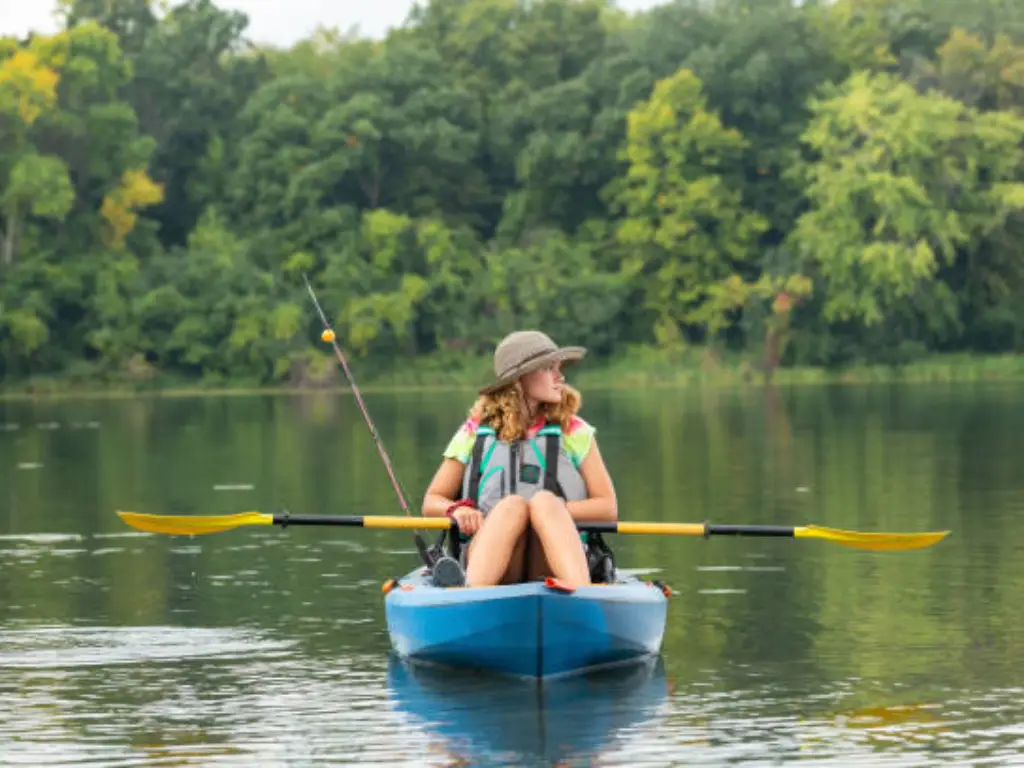
Have an open design that improves stability along with ease of access in and out. Very popular in warm weather and often used for fishing.
- Lake Suitability: These can be used on all types of lakes, but during summers is when their usefulness peaks.
- River Suitability: They can also be used in slow-moving rivers; faster currents or colder weather might make them uncomfortable.
- Ideal For: Casual paddlers who like an open feeling and prefer stability, along with fishing lovers.
Examples:
- Wilderness Systems Tarpon 105: For a comfortable and easy-to-maneuver kayak, consider this stable sit-on-top option.
- Ocean Kayak Malibu 11.5: A multi-use family kayak that is great for fishing as well.
- Hobie Mirage Compass: It might be a little expensive, but it is great for lakes and slow rivers due to a practical pedal drive system.
- Perception Tribe 11.5: Easy to control and stable, making it a breeze to use for paddlers of any experience level.
Sit-in Kayaks:
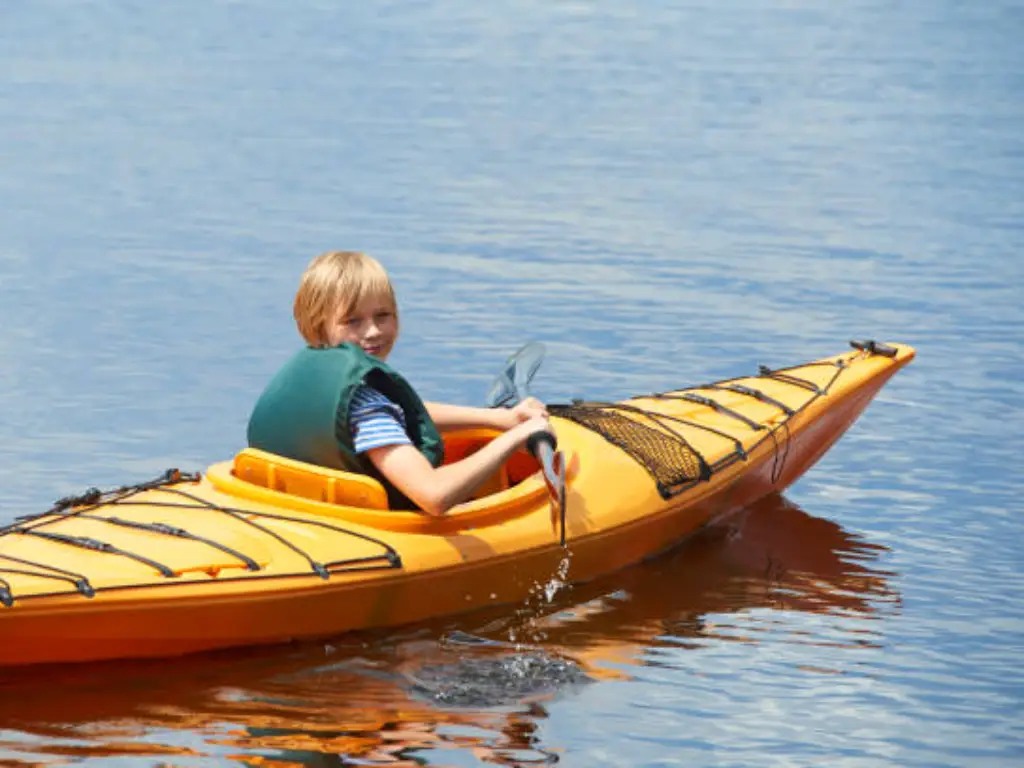
This design allows for the lower body to be kept dry, ideal for controlling the temperature in colder weather or for more challenging conditions.
- Lake Suitability: This shape works for all sizes of lakes, particularly for longer durations of paddling or when wind and waves are present.
- River Suitability: Some designs are more suitable for difficult rivers, as certain sit-in kayaks have improved control and tracking.
- Ideal For: Kayakers looking to explore a variety of water bodies and weather conditions.
Examples:
- Wilderness Systems Pungo 120: A well-known all-purpose kayak, this model is perfect for lakes or rivers, particularly those with a gentle current.
- Old Town Loon 120: Comfortable for extended periods while maintaining good tracking, making this suitable for day trips on lakes.
- Dagger Stratos 12.5 S/L: Designed for lakes, this model features good maneuverability and stability while also being able to handle more difficult rivers.
- Perception Expression 11: This kayak is perfect for relaxed paddling or short outings on calm water.
Fishing Kayaks:

All types of kayaks designed specifically for fishing activities are fishing kayaks. They are usually wider and more stable, with enough room for fishing gear. They have rod holders and many other accessories and come in sit-on-top and sit-in styles. Besides, you will need some kayak fishing accessories for a smooth process.
- Lake Suitability: Very suitable for fishing activities on calm lakes. Some have a wider design and more stable build that allows for fishing activities on choppy lakes.
- River Suitability: Can also be used in slow and wide rivers, but use caution as some features can hinder navigation in narrow or swift rivers.
- Ideal for: Fishermen who like to practice angling from the water.
Examples:
- Old Town Sportsman BigWater PDL 132: Sit-on, pedal-drive equipped. Fantastic for fishing on lakes.
- Hobie Mirage Pro Angler 14: Another top-of-the-range fishing kayak with countless capabilities.
- Perception Pescador Pro 12.0: A good fishing kayak that offers a sit-on-top design and great features for the cost.
- Vibe Kayaks Sea Ghost130: Sit-on-top design with added stability and plenty of storage.
Touring Kayaks:
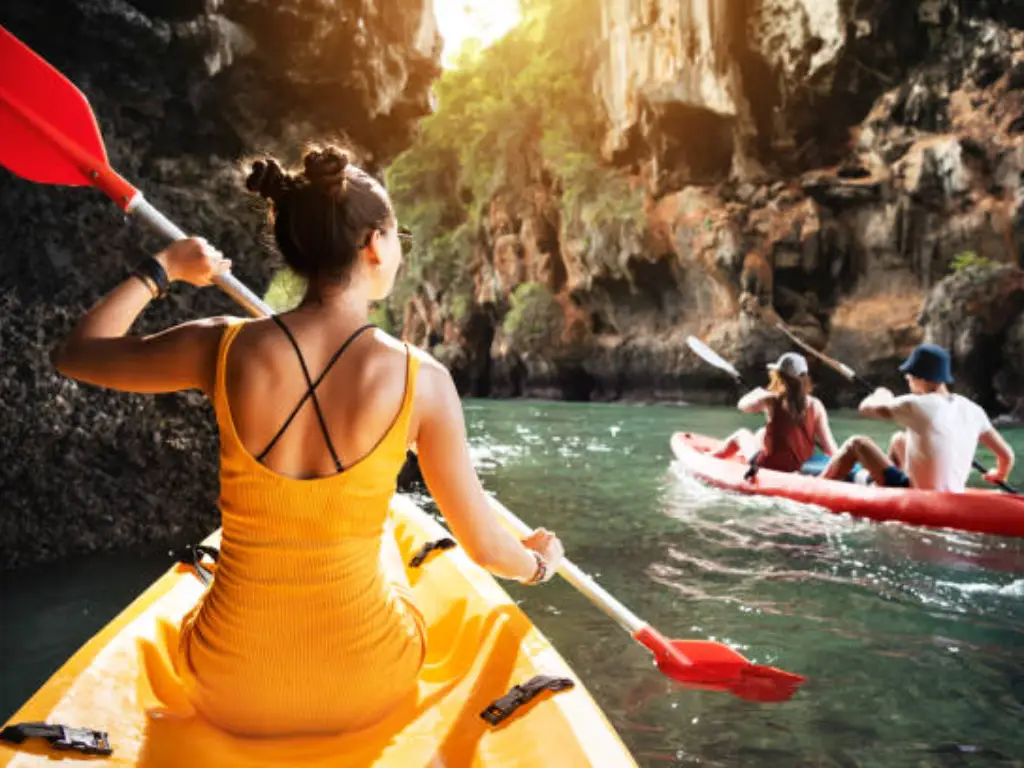
Long narrow hulls that track well and are efficient at paddling. Great for medium to long-distance paddling trips. Modified sit-in style. Equipped with multiple storage hatches for camping gear or supplies.
- Lake Suitability: Excellent for exploring and traveling long distances around large lakes. Their tracking ability reduces paddling fatigue.
- River Suitability: Appropriate for extended journeys on wide, slow-flowing rivers. The longer hull may pose issues in narrow or winding rivers.
- Ideal For: Those who engage in medium to long-distance water trips and exploration, along with highly experienced paddlers who enjoy planning water journeys.
Examples:
- Wilderness Systems Tsunami 145: Optimally designed for different waters, as it maintains the balance between speed, stability, and cargo capacity.
- Eddyline Sitka LT: Ideal for open water or long lake trips due to its lightweight feature and high performance.
- Perception Expression 13.0/14.0: Suitable for both day trips and multi-day excursions due to good comfort and handling.
- Old Town Sorrento 126 SK: Good tracking with a comfortable seating system means effortless navigation of this kayak.
Expedition Kayaks / Sea Kayaks:

These specialist subcategories of touring kayaks are built for enduring longer distances and tougher waters, such as harsh weather conditions and open waters. Equipped with better wind and wave resistance, storage space, and narrower and longer hulls are designed around these features. Handling also improves with the addition of a rudder or adjustable skeg.
- Lake Suitability: Perfect for long-range expeditions on large lakes, as they withstand wind and waves.
- River Suitability: Endowed with adaptability for extended traveling on wide, slow rivers, these kayaks are poorly suited to more technical rivers.
- Ideal For: Highly designed for multi-day trips, incorporating extensive planning and regions into the journey.
Examples:
- Eddyline Fathom: Tailored for expedition cruising and complex water condition handling.
- Delta Kayaks Delta 16: A Kayak excels in nearly all types of water and long trips.
- Boreal Design Baffin P3: Sturdy and long-lasting, ideal for expedition-style adventures.
- Current Designs Solstice GTS: Performance sea kayak with large lake expedition motor.
Remember that the examples mentioned above are just a few common models. It is important to consider these along with the many other good kayaks that are available on the market. When making a choice, it is essential to keep in mind your specific requirements, available budget, and skill level. For the best decision, look for more detailed product information, user reviews, and other guides available online.
Key Features of the Best Kayak for Lake and River
Before selecting any river or lake kayak, there are some features you need to look out for. They are explained below:

Stability of Hull
Generally, a kayak with a wider hull offers more primary stability, which helps beginners to maintain balance. But for experienced kayakers who need the best kayak for lakes and rivers with high speed and agility, a narrower hull with good secondary stability is most suitable.
Cockpit Size and Comfort Level
A spacious cockpit allows for easy entry and exit, making it more comfortable, particularly during long trips. The best kayaks for rivers and lakes come with adjustable seats and padded backrests that ensure comfort.
Portability for Transportation and Storage
Consider the size and weight of the river or lake kayak, as this affects how easy they are to transport and store. Lightweight lakes and rivers kayaks are easier to transport on trailers or car roofs, requiring less effort to install and remove.
Also, you should check out kayaks with foldable and detachable parts, as this will make transport and storage more convenient, especially when there is limited space.
Rigging Options
These refer to the rigging systems or attachment points available on the kayaks. They support the inclusion of accessories like fishing rods, coolers, or dry bags. The best kayak for rivers and lakes should have ample attachment points, bungee cords, and gear tracks that allow for the customization of the kayak to suit specific needs.
This is helpful for photographers, fishermen, anglers, and other people who need to carry extra equipment during their trips.
Material Construction and Durability
The material construction of the kayak determines its durability and how well it can endure the elements of the various water bodies. The common materials used are plastics, such as polyethylene and ABS, as well as composites like carbon fiber and Kevlar.
Lakes and rivers kayaks made from plastic materials are inexpensive and long-lasting, serving as great options for novices or those seeking a rugged option. Kayaks made from composite materials offer better performance and weight-to-strength ratio, serving as great options for experienced kayakers.
Tips for Purchasing a Lake and River Kayak
After checking the features of the various kayaks available, consider the following tips to choose the best lake kayaks and river kayaks.
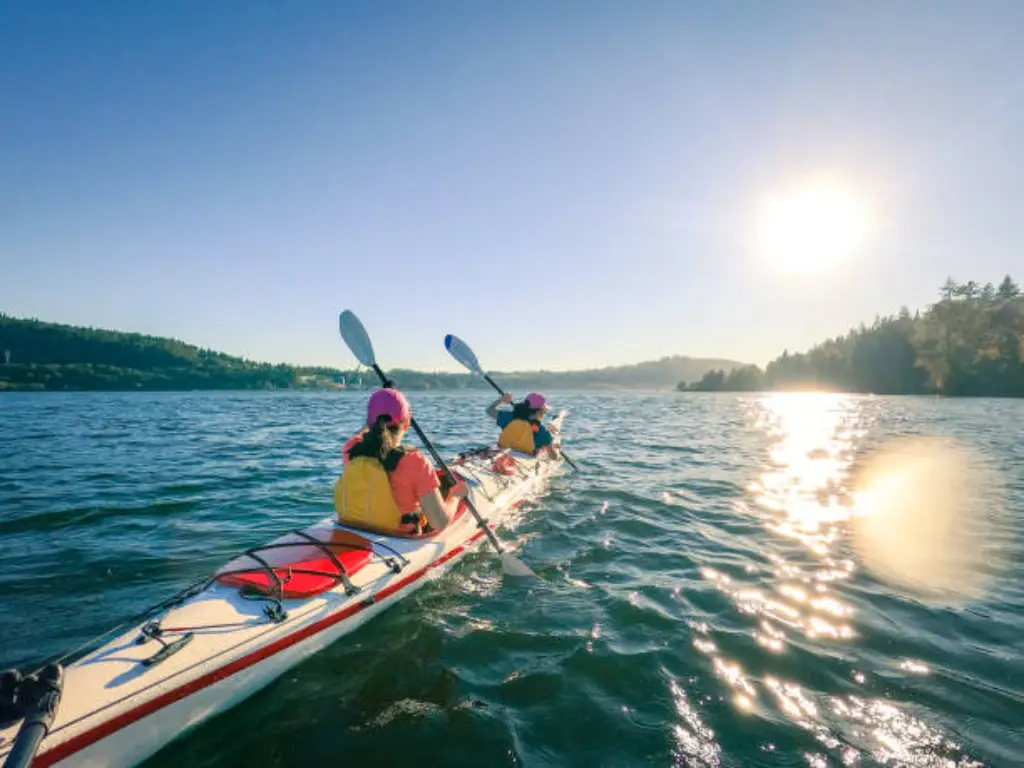
Try the Kayak Before Buying
To be sure you are buying the best kayak for rivers and lakes, try it out. This hands-on experience allows you to assess the kayak’s features, including its stability, comfort, portability, rigging options, and strength. You can also confirm if it suits your paddling style.
Considering Budget and Value
Determine your budget range for the kayak, including the fact that there are different types, brands, and categories of kayaks on the market with varying prices. Evaluate the various options that meet your requirements and choose the best option.
Prepare Safety and Additional Equipment
It’s not just about buying the best lake kayaks or river kayaks, you need to get some safety and additional equipment like a whistle or signaling device, a bilge pump, a paddle leash, a dry bag for storing valuables, and many more.
Conclusion
With this, we hope you’ve gotten some insight on selecting the best kayak for the lake or river for your needs, kayaking experience, and water bodies. Before concluding on the type of river or lake kayak, remember to check its features, such as the hull stability, cockpit size & comfort level, portability for transportation & storage, rigging options, and material construction & durability.
Choosing the best kayak for lakes and rivers is the first step to having fun on the water. Once you have your favorite kayak, it’s time to think about how easy it is to get on the water and how to store it properly.
Imagine being able to easily launch your kayak from the water’s edge every time you want to paddle and then easily docking your kayak in a safe place when you’re done paddling. A proper floating dock can make such convenience possible for you.
If you’re looking for an option that offers easy water access and a solid storage solution for your kayak, check out the Hiseadock floating dock.
Find the Best Plastic Floating Dock System in Hisea
Hiseadock has over 10 years of manufacturing experience and services in more than 80 countries and regions worldwide. With state-of-the-art manufacturing facilities, including over 5,000 square meters and four state-of-the-art production lines, as well as special equipment such as large rotomolding and blow molding machines, Hiseadock is able to achieve quick shipment of standard products (7-10 days of production without inventory) and lead times of approximately 10-15 days for custom orders.
















- Easy and Convenient Access to the Water: The Hiseadock dock provides a stable platform close to the water, allowing you to get in and out of your kayak easily and safely without worrying about slippery or uneven shorelines.
- Stable and Secure Storage: You can safely dock your kayak on the Hiseadock dock without the wear and tear or damage that can result from placing it directly on the shore.
- Low Maintenance: HDPE material is durable and UV-resistant and requires little maintenance, saving you time and energy.
- Flexible Customization: You can customize your Hiseadock dock in different shapes and sizes to fit your shoreline and individual needs.
If you want to further enhance your kayaking experience and make every trip easier, consider a Hiseadock floating dock. To learn more, contact us now!


